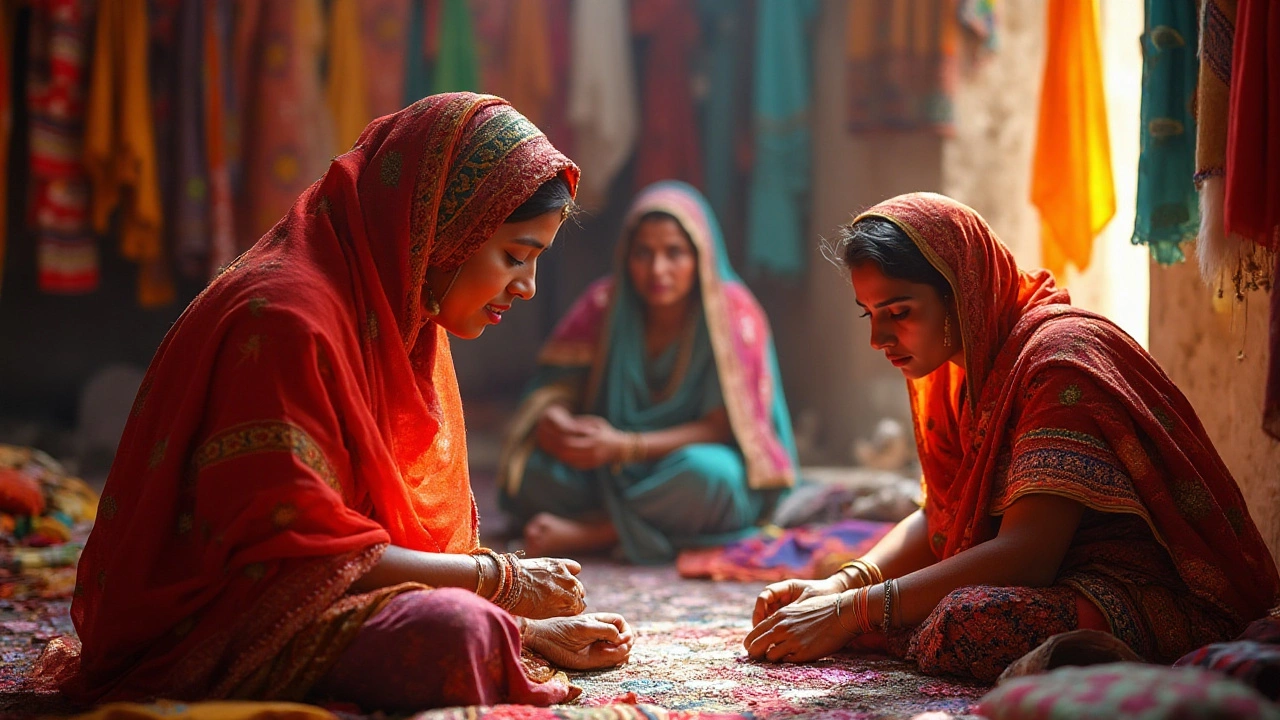Female Artisans: Crafting Culture, One Skill at a Time
When you think of Indian craft, you might picture bright saris or intricate jewelry. Behind many of those pieces are women who have learned the trade from grandmothers, neighbors, or community workshops. These female artisans blend tradition with today’s trends, turning raw material into items that tell a story.
What makes a female artisan? It’s anyone—young or old—who creates a product by hand, whether it’s weaving a cotton blanket, carving wooden figures, painting pottery, or stitching embroidered fabrics. The label isn’t about age or fame; it’s about using skill, patience, and imagination to make something useful or beautiful.
Popular Crafts Made by Women
In Gujarat, women dominate the art of bandhani tie‑dye. They fold tiny sections of cloth, dip it in dye, and repeat the process to get that signature dotted pattern. In West Bengal, the shola (pith) craft is a holiday staple—women carve delicate lanterns and decorative items from the spongy core of the shola plant.
Punjab’s phulkari embroidery is another female‑led tradition. Using bright silk thread, they stitch floral motifs onto shawls and dupattas, creating pieces that double as heirlooms. In the hills of Himachal, women knit woolen socks and scarves, keeping families warm during harsh winters.
These are just a few examples. The common thread is that women often work from home or small community centers, balancing craft with family duties.
Challenges They Face
Even with talent, female artisans hit roadblocks. Limited access to credit means they can’t buy better tools or bulk raw material. Market reach is another issue; many sell only in local fairs, missing out on online shoppers who could pay more.
Social expectations add pressure. In some villages, women are expected to focus on household chores, leaving little time for creative work. Lack of formal training also means they rely on trial and error, which can slow progress.
Despite these hurdles, many women find ways around them. Cooperatives have emerged where members pool resources, share knowledge, and negotiate better prices together. NGOs often run skill‑upgrade workshops, teaching modern design tricks that appeal to younger buyers.
Supporting female artisans doesn’t have to be complicated. Buying directly from their stalls, gifting handmade items, or sharing their story on social media can boost visibility. If you run a small shop, consider stocking a few locally‑made pieces and label them clearly—customers love to know the maker’s name and background.
For those interested in deeper involvement, look for community‑based programs that need volunteers for marketing, photography, or basic bookkeeping. Your help can free up more time for the artisans to focus on creation.
In short, female artisans are the quiet engine behind India’s vibrant craft scene. Their work preserves heritage, supports families, and adds a personal touch to everyday objects. The next time you see a hand‑woven rug or a hand‑painted pot, think about the woman who wove or painted it, and consider how a small act—like a purchase or a share—can keep her craft alive.
